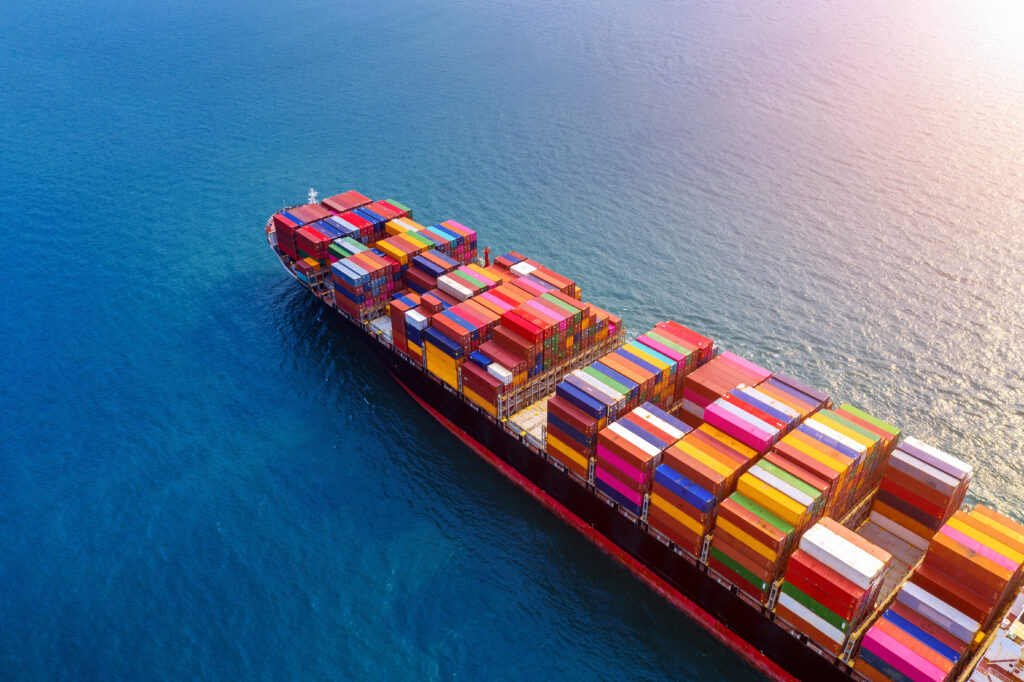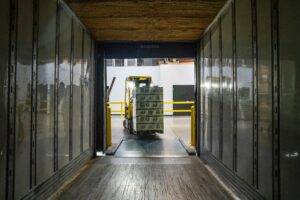Transportation options such as trucks, trains, and planes play an integral part in the modern supply chain. However, ocean freight shipping remains unrivaled when it comes to transferring massive volumes of products throughout the world. People use products regularly, from automobiles to toys to industrial chemicals to food, commonly arriving via ocean freight transportation. To engage in international trade, the vast majority of companies will need to rely on ocean freight shipping.
Companies must have a solid grasp of ocean freight transportation before venturing into the market for the first time. It can be challenging to disentangle the sea freight sector’s numerous interwoven aspects, including shippers, carriers, brokers, and more. In this article, we will introduce you to the basics of ocean freight shipping, with particular emphasis on surety bonds and their role in shielding cargo owners and creditors.
What is an Ocean Freight?
Ocean freight, often known as “maritime transport of commodities” or “cargo shipping,” is the movement of goods via ocean vessels. By definition, maritime transport is global, and the shipping industry accounts for 90% of all international trade. World upkeep is made possible by international sea shipping, and hazardous products can be transported with ease. If your company needs to transport substantial quantities but is under no time constraints, this shipping option can be the best option.
The seas have long been the most vital means of travel for people all across the planet. Shipping goods across the ocean is a common practice and often the only one available.
Cargo shipping by sea is a viable option, but it is dependent on a number of conditions. There are advantages and disadvantages to using this method to transport goods throughout the world, but there are also certain considerations to bear in mind. Four of these are the regular costs, initial investment, dependability, volume, and speed with which the goods may be delivered. There are many factors to think about, including time, security, range, and environmental impact.
Different Types of Ocean Freight Services
Knowing the various sea freight services available is essential if you intend to use them; only then will you be able to choose the one most suits your needs. The fact is, there are four distinct varieties of shipping: full container load (FCL), less than container load (LCL), roll-on/roll-off (RORO), and dry bulk.
- FCL
Full Container Load (FCL) refers to a container that is completely stuffed with goods. Flat racks and open-top containers are also acceptable, with lengths of 20 feet, 40 feet, and 45 feet, respectively. FLC is the best option if you have enough items to fill your container. Large objects such as furniture, automobiles, and machinery can also be shipped.
- LCL
Less than container load (LCL) shipments are those in which the quantity of items shipped does not fill an entire container. And since there is only so much cargo that can fit in the container, we’ll share it with other consignees. Because this is international cargo transportation, the commodities will be unloaded from the ship individually at the appointed port.
- RORO
RORO or Roll On, Roll Off is an excellent solution for customers that need automobile shipping services. The automobiles will be driven into the RORO ship – blocked, fastened, braced, and tied, to make sure it won’t be harmed during the shipment period.
- Dry Bulk Shipping
If you have dry bulk cargoes, you might select for Dry Bulk Shipping. The shipping firm knows that it should be maintained dry at all times since once moisture sneaks in, it might cause harm to the cargo.
How Does Ocean Freight Work?
Goods are stored in containers for ocean freight shipping. The freight forwarder arranges a container or space with the shipping agent—origin country customs clearance and shipment transport to the destination port. Depending on the amount, full or shared containers are used to load goods onto the cargo ship. A shipment must travel through customs a second time when it reaches its final destination.
Typically, the shipping agent handles this process, and the products are released for distribution once the necessary fees and taxes have been paid. When shipped, items are typically delivered on pallets or in the same container. And marine freight is just one part of the giant supply chain puzzle. To ensure their products are transported without incident and within the law, some businesses use a specialist 3PL. After you have hired a shipping business, they will pick up the items from the source and transport them through the port using one of the methods listed above.
A delay in transit via the port on both ends due to customs clearance procedures should be factored into estimated delivery times. If you still don’t have enough goods to ship via LCL, shipping them via Air Freight or Courier is more cost-effective. These are both used to transport less than a full pallet, but the higher costs reflect the smaller size of the vehicles.
Why Should You Use Ocean Transport?
Anyone who needs to send goods across international borders like shipping across Canada, USA, UK or other countries ocean freight shipping is an option that can get the job done at a reasonable price. It’s one of the oldest ways to move goods, and since oceans and waterways cover most of the Earth, it’s also one of the most accessible. In fact, the international shipping industry moves more than 90% of the goods that move around the world. But why would a shipper choose ocean transport when they have other options, like air, road, and rail? Read on to find out the six five advantages.
1. Economical
Shipping goods by sea is more cost-effective than shipping by other methods like rail, road, or air. Shipping merchandise internationally at minimal cost is just one of the many services offered by ocean transport companies. Many firms rely on cost-effective transportation methods to keep their product prices low for consumers. This will give you an edge over the competition.
2. Low Maintenance Cost
The upkeep costs for water transportation are much cheaper than those for air and rail. Because of this, shipping goods over sea is rather inexpensive.
3. Ideal for Heavy Items
The ability of the shipping industry to convey big, heavy, or bulky cargo – also known as break bulk or Not in Trailer (NIT) loads – is a significant advantage of sea freight shipping. You can transport heavy items through sea freight. Especially if you are worrying about grain transportation or large cars, machinery, construction supplies, and other varied goods you can easily transport them through ocean freight at a very nominal price. Cargo that is too large to be shipped via airplane or driven across the country is no problem for most ships.
4 – Eco-Friendly
Compared to shipping by sea, the carbon footprints left by flying and other means of land transport are far more significant. Alternatively, ships have the lowest carbon footprint of any mode of transportation. Compared to other transport methods, they produce the fewest grammes of exhaust gas per tonne of cargo. Because of developments in technology, the introduction of new vessels, and the widespread use of alternatives fuelled by LNG, these already-low emissions will continue to decrease.
5. Safety
In addition to its numerous benefits, shipping goods via ocean has the added benefit of safely moving risky commodities and cargo. The shipping sector is experienced in transporting dangerous goods, and regulations have been put in place to ensure the safety of the vessel, its crew, its cargo, and the surrounding environment. There has been a significant reduction in cargo loss as a result of marine disasters over the past decade as maritime security has increased. Shipping containers are built to be secured and sealed for safety reasons.
6. Flexibility
Regardless of the dimensions of your cargo, you should be able to find a sea freight company that meets your every need. It is possible to share the shipping expense by consolidating multiple smaller shipments into a single container. Because more oversized items can be distributed across multiple containers, shippers have unprecedented flexibility in terms of volume. Vessels are the most efficient means of transporting high cargo quantities since they are designed to carry massive amounts of commodities or raw resources.
Wrapping Up
After reading this, you should have a firm grasp of what ocean freight is, how it operates, and why you might want to use it. Simply said, in today’s worldwide shipping sector, the benefits of shipping via water are numerous. One of the oldest means of carrying commodities over great distances, connecting goods between ports of the call is now easier than ever.
Ocean freight is, without question, your best bet when it comes to shipping anything around the world. Those needing dependable and low-rate ocean freight services in Canada need to look no further than I-Way, as we offer only the finest Ocean Freight shipping options to our valued customers.




